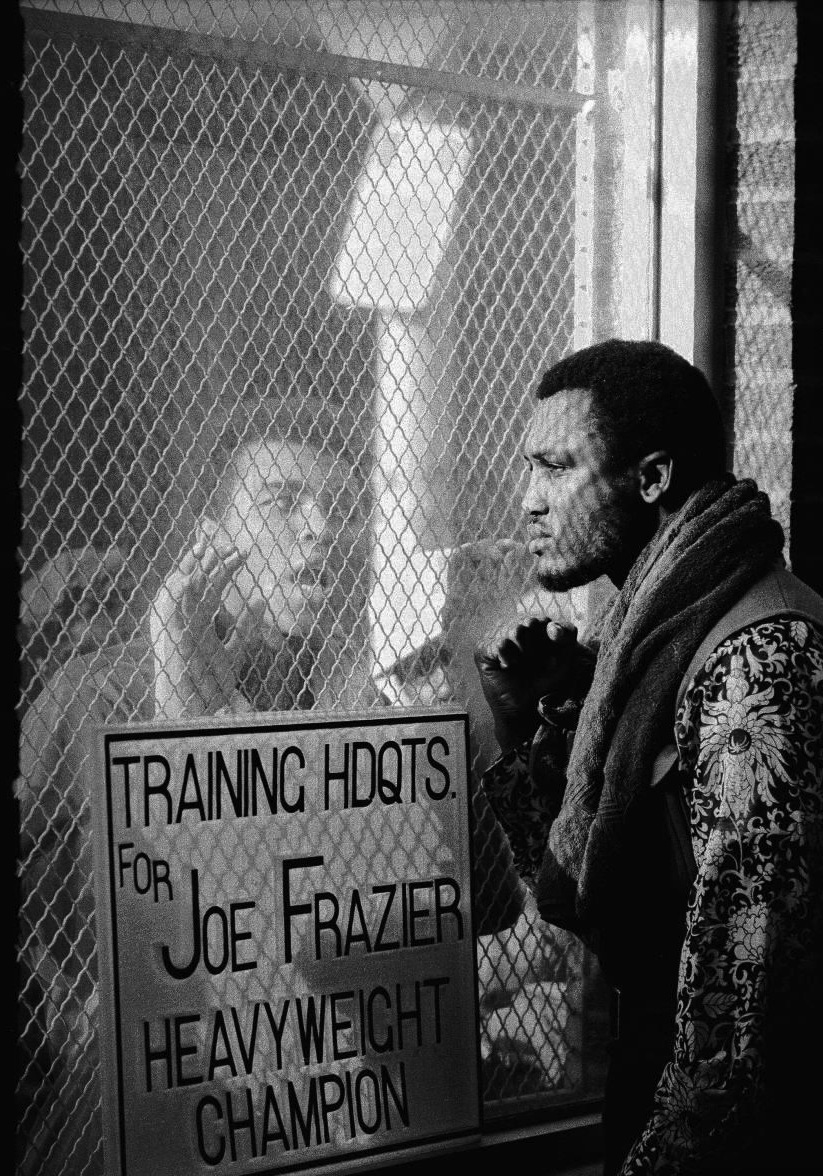
ASSOCIATED PRESS: Joe Frazier, the former heavyweight champion who handed Muhammad Ali his first defeat yet had to live forever in his shadow, has died after a brief final fight with liver cancer. He was 67. The family issued a release confirming the boxer’s death on Monday night. Frazier, who took on Ali in three momentous fights in the 1970s — including the epic “Thrilla in Manilla” — had been under home hospice care after being diagnosed just weeks ago with the cancer that took his life, a family friend said. Until then, Frazier had been doing regular autograph appearances, including one in Las Vegas in September. MORE
NEW YORK TIMES: Known as Smokin’ Joe, Frazier stalked his opponents around the ring with a crouching, relentless attack — his head low and bobbing, his broad, powerful shoulders hunched — as he bore down on them with an onslaught of withering jabs and crushing body blows, setting them up for his devastating left hook. It was an overpowering modus operandi that led to versions of the heavyweight crown from 1968 to 1973. Frazier won 32 fights in all, 27 by knockouts, losing four times — twice to Ali in furious bouts and twice to George Foreman. He also recorded one draw. A slugger who weathered repeated blows to the head while he delivered punishment, Frazier proved a formidable figure. But his career was defined by his rivalry with Ali, who ridiculed him as a black man in the guise of a Great White Hope. Frazier detested him.
Ali vs. Frazier was a study in contrasts. Ali: tall and handsome, a wit given to spouting poetry, a magnetic figure who drew adulation and denigration alike, the one for his prowess and outsize personality, the other for his anti-war views and Black Power embrace of Islam. Frazier: a bull-like man of few words with a blue-collar image and a glowering visage who in so many ways could be on an equal footing with his rival only in the ring. Frazier won the undisputed heavyweight title with a 15-round decision over Ali at Madison Square Garden in March 1971, in an extravaganza known as the Fight of the Century. Ali scored a 12-round decision at the Garden in a non-title bout in January 1974. Then came the Thrilla in Manila championship bout, in October 1975, regarded as one of the greatest fights in boxing history. It ended when a battered Frazier, one eye swollen shut, did not come out for the 15th round. The Ali-Frazier battles played out at a time when the heavyweight boxing champion was far more celebrated than he is today, a figure who could stand alone in the spotlight a decade before an alphabet soup of boxing sanctioning bodies arose, making it difficult for the average fan to figure out just who held what title.
The rivalry was also given a political and social cast. Many viewed the Ali-Frazier matches as a snapshot of the struggles of the 1960s. Ali, an adherent of the Nation of Islam, came to represent rising black anger in America and opposition to the Vietnam War. Frazier voiced no political views, but he was nonetheless depicted, to his consternation, as the favorite of the establishment. Ali called him “ignorant,” likened him to a gorilla and said his black supporters were Uncle Toms. “Frazier had become the white man’s fighter, Mr. Charley was rooting for Frazier, and that meant blacks were boycotting him in their heart,” Norman Mailer wrote in Life magazine following the first Ali-Frazier bout. Frazier, wrote Mailer, was “twice as black as Clay and half as handsome,” with “the rugged decent life-worked face of a man who had labored in the pits all his life.” Frazier could never match Ali’s charisma or his gift for the provocative quote. He was essentially a man devoted to a brutal craft, willing to give countless hours to his spartan training-camp routine and unsparing of his body inside the ring. MORE
